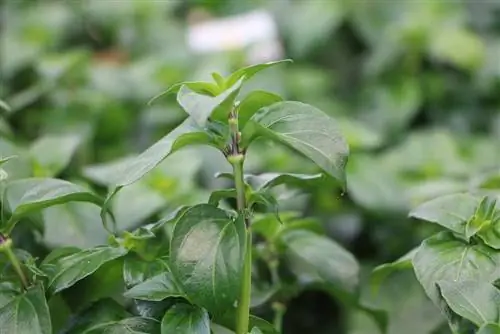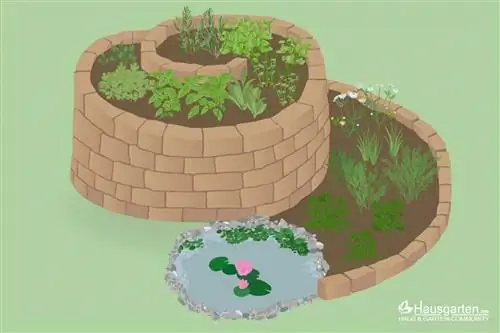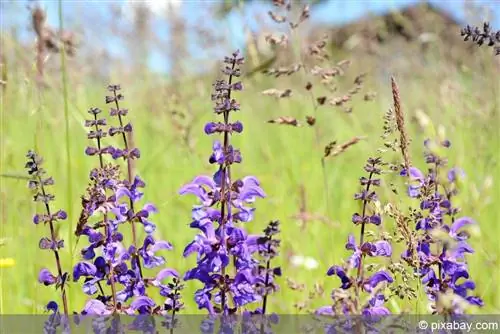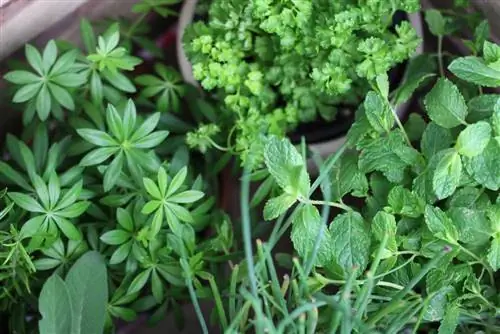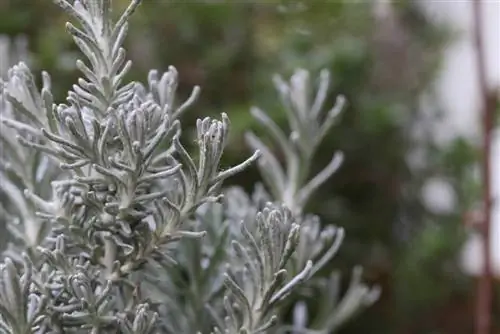- Author admin [email protected].
- Public 2023-12-17 03:39.
- Last modified 2025-01-24 12:45.
Rungia klossii is a plant with an amazing mushroom aroma, which has long enriched the menu of local cuisines in tropical and subtropical countries. The original home of the spice plant is in Papua New Guinea, where it can still be found up to an altitude of 2000 meters. Thanks to its adaptability, the vitamin-rich mushroom herb can now also be found in Australia and South Asia. The exotic plant is easy to cultivate in a pot; even inexperienced hobby gardeners can easily handle the mushroom herb.
Location and substrate
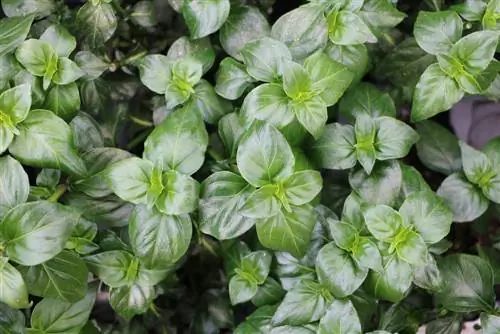
The perennial, herbaceous Rungia klossii prefers a protected, warm location with high humidity. Due to its exotic requirements, the herb can almost only be cultivated in planters. In summer, however, you can give the plant a sunny spot on the terrace or balcony. However, the plant also has no objection to a place in light partial shade. The mushroom herb, with its growth height of 50 to 80 centimeters, is extremely tolerant of the soil. The plant copes with humus-rich potting soil as well as with a sandy substrate. However, the pH value of the soil should not exceed 6.7 and should not contain lime. This inhibits growth and prevents the roots from absorbing water.
Watering and fertilizing
Rungia klossii is extremely sensitive to excessive dryness. The root ball of the tropical plant must not dry out at any time, as this can quickly lead to the death of the mushroom herb. Therefore, check the moisture content of the substrate more often and water immediately as soon as the top layer has noticeably dried out. Use rainwater, as hard water from the tap can also damage the plant. However, caution is also advised when it is still wet. You can effectively counteract root rot in the pot with a few simple tricks:
- The flower pot must have drainage holes at the bottom.
- Place a drain made of porous material at the bottom of the vessel.
- Mix the substrate with perlite or fine pebbles.
- Immediately remove excess water from the planter.
Depending on the location conditions, the flowering period of mushroom herb is between October and January. This means that you should water the plant regularly, even in winter quarters. The mushroom herb requires humus-rich soil, but the supply of nutrients and minerals is limited, especially in planters. Liquid and long-term fertilizers have proven equally effective for the spice plant. The nutrients are administered in liquid form directly via the irrigation water. The supply of nutrients can also take place in winter. A fertilizer containing phosphorus promotes the plant's abundance and abundance of flowers. However, watch the thick-fleshed leaves closely. If these change color and fall off, you should stop fertilizing in the cold season.
Planting

The perennial mushroom herb with its up to 8 centimeter long, dark green leaves is still considered a culinary insider tip among gourmets in this country. The requirements are low in order to successfully keep the spice plant in your own four walls. In order to get the plants safely through the winter, you should avoid cultivating them outdoors all year round. Rather, use a planter that is sufficiently wide and deep so that you can place the tropical herb in a safe location if there is a risk of frost. If you use normal potting soil, you should first enrich it with humus and small amounts of clay. The mushroom herb can be planted all year round, but when moved outdoors the leaves are extremely sensitive to direct sunlight in the first few days. Slowly acclimate the thick-fleshed foliage to long-lasting UV radiation. For example, you can do this by shading the mushroom herb with a parasol during midday. The dark green Rungia klossii has a bush-like growth. If the plant is cultivated directly outdoors in the summer months, you should maintain a minimum distance of around 30 centimeters between the individual plants. You can also create ideal growth conditions here by mixing the substrate with humus or compost before moving.
Propagate
Mushroom herb is still relatively unknown in this country, so the seeds are rarely available in specialist stores. However, growing the seeds is relatively easy:
- Select a shallow vessel.
- The substrate should be low in nutrients and lime.
- Only cover the seeds lightly with soil and keep them evenly moist.
- A perforated film increases the humidity.
Tropical and subtropical plants in particular require warmth and high humidity for successful germination. If you cover the planter with foil, you should remove it for a few hours every day. This promotes air circulation and at the same time prevents mold from forming on the substrate. However, the tropical plant can also be easily propagated by root division. To do this, an older, strong plant is dug up and cut in half with an ax or a sharp spade. Place the plant parts as usual in humus-rich soil and water thoroughly. Because Rungia klossii is mainly cultivated in the winter garden or a bright room, you can carry out this measure all year round.
Cutting
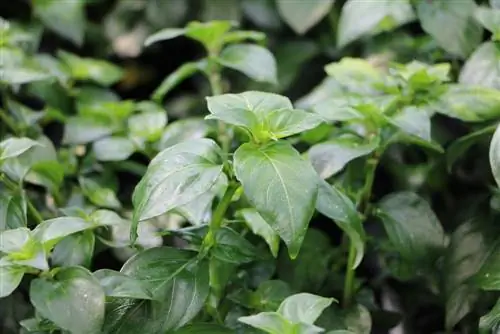
The plant is pruned directly during harvest. Use sharp scissors or a knife to cut off shoot tips up to 5 centimeters long. Only harvest as much as you can immediately use. The leaves almost completely lose their tasty aroma when dry. By cutting, you stimulate the plant to produce more bushy shoots. If necessary, you can shorten the herb by up to 2/3. This is especially necessary if the foliage is worried or you haven't cut any shoots for a long time. You can remove wilted and dead plant parts all year round.
Tip:
Mushroom herbs can be used to flavor pan-fried dishes, soups and sauces. Add the leaves shortly before the end of the cooking time and let them steep sufficiently.
Wintering
The herb reacts sensitively to low temperatures. As soon as the temperatures in the garden drop below 10°C, even at night, you should move the plant to a bright, warm room. Overwintering occurs at 12 to 17°C. At cooler temperatures, the mushroom herb sheds its leaves and may not bloom. You should water regularly even in winter, but the supply of nutrients should only be moderate.
Conclusion
The spice and herb with its mushroom-like taste is an enrichment for the home kitchen and can also be cultivated on the terrace or sunny balcony in summer. Mushroom herb offers hobby cooks a welcome change, and Rungia klossii is also rich in vitamins.

